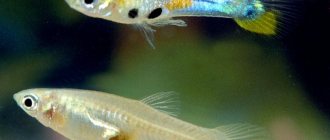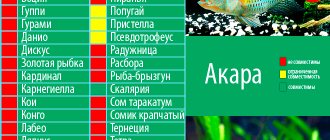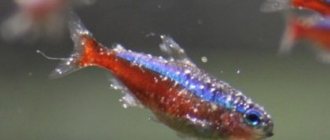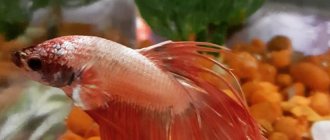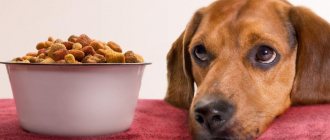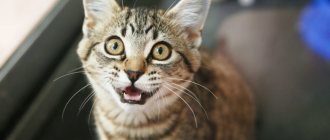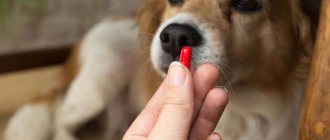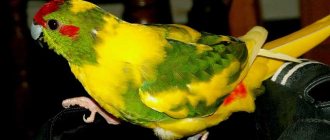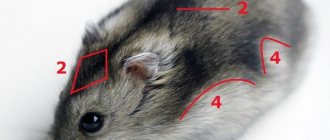Natural nutrition
In order to understand how to feed aquarium fish, you need to find out what they eat in their natural habitat. As a rule, these are completely different products for different types of fish.
So what do fish eat? Let's consider this issue in more detail.
Herbivores have a long digestive tract, which indicates the need for frequent feeding in small portions. The diet of such fish in their natural environment usually consists of a variety of algae, plant particles, fruits and seeds.
Carnivorous species , in turn, have a pronounced large stomach, which means they must eat large amounts of food a small number of times. Under natural conditions, they usually feed on live or dead small animals, insects, birds, invertebrates, and amphibians.
Omnivores. Even based on their name, it becomes clear that such species prefer any acceptable food.
What happens if you overfeed?
Under natural conditions, a fish must make a lot of effort to fill its stomach. In an artificial reservoir, including an aquarium, abundant food is supplied systematically, and the fish does not have to waste time and effort searching for it.
As a result , the fish, by nature a rather voracious creature , tries to eat all the food, and, as a result, begins to suffer from obesity; this disease immediately entails another one - infertility. The ending may be even more dire: the fish may die because their stomachs cannot digest the large volume of food they eat.
In addition, when overfeeding, food residues fall to the bottom of the aquarium, into the soil, and, decomposing, spoil the water: it becomes cloudy due to the rapid proliferation of microorganisms and turns into an ideal environment for various infections. Also, during the decomposition of microorganisms in water, oxygen is absorbed, and ammonia and nitrates are released, which can poison fish and plants.
What to feed aquarium fish at home
Existing food for aquarium fish is divided into the following varieties: frozen, branded, live and plant-based. Keeping these pets requires the use of all varieties in the diet, as the appearance and health of your pets will depend on it.
However, some types of fish eat only live food, while others eat exclusively plant food. For common species, the best diet is one with the following components: branded food, constant feeding with live foods and periodic feeding with plant foods.
How to properly feed dry fish food
It would seem that feeding the fish with dry food is very simple: open the jar and pour in as much as you need. But in reality this is far from the case.
Dry fish food of high quality serves as a complete replacement for natural nutrition. They are completely free of parasites and, when fed properly, rarely cause bacterial diseases. Remember to follow the basic rules for feeding dry food: soak it for 7-10 minutes before feeding it in the aquarium and do not overfeed the fish, especially voracious goldfish and cichlids.
Nutrition in the form of tablets
Tablets and tablet forms are food that gradually sinks in water and falls to the bottom. It is better to give them to bottom fish that live in the lower layers of water and other hydrobionts (shrimp, snails). When the tablets fall into the aquarium water, they do not remain on the surface, but immediately go to the bottom, so other fish will not take it away. Consequently, bottom-dwelling pets will not remain hungry.
Tablet types of food are a large and dense substance, which is why the fish is not able to swallow such food completely. She will have to bite off bit by bit, or grind off. The tablets consist of natural ingredients and vitamin complexes. If you are leaving home for several days, a few large tablets will form the main diet for your fish. The food will stick to the wall of the aquarium, the fish will gather around it, and will bite off a piece as often as they need.
It is generally accepted that dry foods spoil aquarium water, and this opinion also applies to tablets. The only disadvantage of such food is that fish that swim in the upper layers of water will not be able to feast on it. If you have a species aquarium with exclusively bottom-dwelling fish, then such feeding will always come in handy. Another point is that the tablets seep heavily into the coarse soil, so it will be impossible to get it out even with a siphon.
Food in the form of flakes and chips
The flakes are fragile in structure, so they quickly get wet and fall apart. This food can be fed to all types of fish, but not large ones. Perfect for fish with an upper mouth that takes food from the surface. Some of this food will settle on the bottom, so it will also reach the bottom fish.
Cereals and chips do not have much nutritional value because they contain high concentrations of agar, gelatin and gluten. Such feed leads to cloudiness and contamination of water. It gradually decomposes and breaks up into microparticles that settle on the bottom, plants, and filter. For this reason, feeding such food should not occur too often, but only in exceptional cases (during the fish owner’s vacation).
Chips have a similar texture to cereal, but they have fewer defects. Their structure is more dense and does not disintegrate as quickly. It gets wet slowly, so small fish won’t be able to enjoy it as they should. Chips can easily be eaten by large aquatic organisms that can grab a large piece of food.
Feeding in the form of sticks, granules and microfeed
The sticks are a granular substance that is smaller in size than flakes. However, there are many types of pellets that are suitable for specific types and sizes of fish. There are two types of granulated food - floating and sinking. The granules have a high density, due to which they slowly disintegrate, and you can promptly remove the excess portion from the aquarium without overfeeding your pets.
There are expensive and cheap sticks for feeding fish. It is better to buy expensive food, since it is less harmful to the digestive tract of the fish. In cheap food, the shell is digested, and the rest of the contents gradually rot, causing inflammation of the gastrointestinal tract of pets. Another feature of granules is that they expand several times in water. It turns out that the fish eats a portion of food, and after that it will begin to increase in its stomach, causing fermentation.
If you notice that after feeding such food the fish has become bloated, lost coordination, hung upside down, and has inflammation in the anus, this is a clear symptom of a gastrointestinal disorder. If you feed your pets little by little and not so often, problems can be avoided. Once a week, give the fish a fasting day and create an optimal menu.
Dry microfeeds are small food particles ground into dust. Excellent for young animals and fry. Adult and large fish simply will not see microfeed. Its main drawback is that it quickly pollutes the water, so watch the dosage and avoid overfeeding. It is not a complete replacement for live dust. If you want to raise healthy fry, feed them live, natural food. Liquid microfeed can be used to feed fry. They contain artemia proteins, egg yolks, and vitamin complexes. Grains of such food float in the water column, and the cubs take it from time to time. Liquid microfeed also spoils water.
Live food for aquarium fish
Live food is very popular with fish and is considered one of the best. However, there is no need to feed the same type on a constant basis, since the fish need a varied diet. The most common types of live food are: bloodworms, tubifex and coretra (Figure 2). However, it has the following disadvantages:
- Diseases can be introduced into the aquarium;
- Poison pets with a low-quality product;
- It is not recommended to carry out very frequent feedings of bloodworms, since they are poorly digested.
The simplest and most accessible disinfection for any aquarist is freezing, which can destroy some of the pathological microorganisms in it.
During spawning, live food is very necessary for fish. After receiving a good portion of any type of live food, individuals are more willing to spawn. Fry raised on such a diet are distinguished by good health and strong immunity in the future.
Note: Today there is a lot of information about the dangers of the tubifex, but these data are greatly exaggerated. The tubifex can be cleaned by washing 2-3 times a day for one week. After it has acquired a pink tint, it can be fed.
The tubifex can be stored in the refrigerator on the bottom shelf, but it should be placed in a container with low sides and a small amount of water, which must be changed daily. Bloodworms should be stored between two napkins placed in a phyto cuvette.
It is recommended to feed live food through special feeders, but you should not store it for too long to prevent poisoning.
How to feed frozen fish food
Before answering this question, you need to know what frozen live food is? Which aquatic organisms are suitable for freezing and which are not? And when purchasing frozen food, be able to determine its freshness and suitability for feeding to fish. Why is this so important?
The fact is that pet store employees are, as a rule, not aquarists and they don’t really care whether you buy sick or healthy fish from them, as well as high-quality or low-quality food. Therefore, in order not to throw money away, and also not to spoil the water and undermine the health of your fish, you need to have some knowledge.
Why is live food frozen at all? Live food is frozen in order to preserve its nutritional value and essential amino acids, which are so important for the fish’s body. But that is not all!
When feeding frozen live food to fish, they instinctively feel that this food is intended for them by nature and eat it with pleasure. And the higher quality the frozen food, the more useful it will be and the fish will like it. Frozen live food is significantly inferior to non-frozen live food, but frozen food is always better than dry or artificial food.
What live foods are suitable for freezing?
In case of mass catching of live food, it can be stored for quite a long period of time using freezing. All food items are suitable for freezing, provided that they are suitable as food for aquarium fish.
Of the most well-known live foods that are suitable for freezing: the larva of the peristous mosquito - coretra, the larva of the bell mosquito - bloodworm, the larva of the mosquito - culex (“devil”), etc. Among the copepods is Cyclops, and among the cladocerans are Daphnia magna, moina, ceriodaphnia, etc.
The tubifex (a type of oligochaete worm of the family Tubificidae) is less suitable for freezing. After freezing, tender tubifex worms significantly lose their original appearance and turn into a porridge-like mass.
Ciliates and rotifers are very easy to breed at home, so there is no need to freeze such food items.
How to properly freeze live food
The easiest way is to freeze the coretra. For example, I do it this way: I keep the caught larvae in a net for 15 -20 minutes to allow the water to drain completely. When frozen, excess liquid will turn into ice and squeeze the contents of the larvae out, leaving only one shell of them. Such food is considered a waste and is eaten very poorly or not at all by the fish.
Next, I place the larvae in specially prepared plastic jars in a layer of 10-15 cm and place them in the freezer. You can make plastic jars from the cut off bottom of plastic bottles. It will be more difficult to freeze bloodworms, as well as copepods and cladocerans. For high-quality freezing, it is necessary that the water content in them is minimal.
For this purpose, the bloodworms and crustaceans must be dried well, kept for some time on any thick material and, in a semi-dry, dehydrated form, placed in plastic molds or jars and placed in the freezer. Before feeding the fish, frozen food must be thawed.
How to defrost food correctly
Note: Remember that repeated freezing significantly reduces the quality of the feed! All prepared frozen food is never completely defrosted. When re-frozen, it not only loses its natural appearance, but also its nutritional value.
If you purchased a briquette of frozen food, you need to break off a small piece from it and place it in a net, hold it under the tap, washing it with cold running water until it is completely defrosted, and only then feed it to the fish.
If you have defrosted too much food, you need to place it in a separate container, store it in a cool place and feed it little by little to the fish. If the food is frozen in a plastic jar, you need to place the jar in a net and place it under a small stream of running water. As the required amount of defrosted food accumulates in the net, defrosting should be stopped and the jar of frozen food should be placed in the freezer.
This method of defrosting live food is good because it is thoroughly washed, and its defrosted amount can always be controlled. To ensure that the food is always eaten by the fish, it is necessary to add it in small portions using tweezers or a measuring spoon for hygienic reasons. Floating feeders for frozen food are not needed since the defrosted food does not spread over the surface, but falls to the bottom.
How to determine the quality of frozen live food
You can determine the quality of frozen food visually. If you have a briquette with frozen coretra or bloodworms in your hands, take a closer look: are the larvae themselves clearly visible, as well as their correct shape and shell structure? If everything is hard to distinguish, refuse to purchase such food.
When transporting frozen food, avoid defrosting it. To prevent this from happening, frozen food must be transported in a thermos specially designated for this purpose.
Plant foods, how to feed them correctly to fish
For most existing species of aquarium pets, plant food is desirable in the diet, but at the same time, it is difficult to find an individual that has never eaten plants. The only exceptions are predatory species.
Note: What type of food is needed for your pets can always be checked with sellers in specialized stores. Herbal products may be in the form of tablets or flakes, and may also be branded.
Cereals can be used as a vegetable element of the diet, but before direct use they must be poured with boiling water and cooled. Many representatives of catfish, carp and cichlids eat semolina with great delight.
What to feed?
If you're not sure what vegetables you can feed your fish, here are some basic options.
Green peas are suitable for almost all types of fish, and they eat them with pleasure, as they help their intestines work. And slightly boiled green peas are generally extremely necessary for goldfish. Since they have a compressed, deformed body, their internal organs are also compressed, and this leads to constipation and illness.
If you need a universal solution suitable for all fish, including catfish, then cucumbers or zucchini are suitable. Just cut them into pieces, boil them a little and give them to the fish.
As I already said, fish also eat herbs well, such as simple ones like dandelions and nettles. The principle is the same, scald and put in water. Only for me they start eating on the second day, when the dandelions get wet. But they eat very greedily. By the way, both cucumbers and dandelions are very fond of snails, such as ampularia and marise. In the summer this is a cheap, nutritious, accessible feed for them.
How to load?
The most common problem is vegetables floating. And aquarists begin to come up with various clever solutions, but the simplest thing is to chop a piece of vegetables on a fork and... that’s it. Doesn't float, doesn't rust, fish eat it. It’s no longer that easy with herbs; they stubbornly refuse to inject themselves. I tied the dandelions to a fork using an elastic band, not an ideal solution, but it worked. The angelfish still tore off entire layers from them and carried them around the aquarium.
Vegetables and, in general, any greens are an excellent solution for those who want to diversify the diet of their fish. Vitamins, healthy gastrointestinal tract, no constipation, availability and low price. I think the choice is obvious.
Rule five: how to feed properly
The dry mixtures are sufficiently crushed that they do not need to be rubbed between your fingers. Only if the fish in the aquarium are small.
Fresh prepared live food is given in regular portions.
Frozen food can be defrosted first (the main thing is to remember to prevent the food from spoiling) or by placing it in water and holding it until the ice melts. The second option is suitable if there are no active predators in the aquarium. Avoid keeping your fingers in the water when feeding aggressive large fish.
When dispensing delicacies, pay special attention to leftover food, which must be removed from the aquarium immediately.
What do different types of fish eat?
Absolutely all fish differ from each other in the food they eat and their behavior during feeding. Predatory fish species can set up some kind of ambush when hunting their prey or freeze in anticipation of approaching prey. However, other predators may pursue their prey in the desire to overtake and capture the prey.
Herbivorous species primarily feed on living or decaying plant tissue. Aquarium fish get food by biting off parts of plants or can swallow them whole. However, among herbivorous fish there are species that eat only algae.
Herbivores
Herbivorous or herbivorous fish
They have a small stomach and long intestines, so one meal is not enough for them. Some herbivores, such as cleaner fish, spend the entire day “grazing” on aquarium plants and eating small algae. The protein content in the diet of herbivorous fish is 15-30%.
The diet of herbivorous fish can be made up of specialized food and scalded vegetables, for example, zucchini, cucumber or lettuce.
Carnivores
Carnivorous or predatory fish
feed mainly on protein foods. Protein in the diet of such fish is more than 45%. Predatory fish have a large stomach. Typically, they are fed once a day. There are species of fish that swallow food fish whole and then digest it for several days.
The diet of predatory fish can be made up of specialized dry food and live or frozen food.
Omnivores
Omnivorous fish
the most common inhabitants of aquariums. Protein in the diet of omnivores is about 40%. These fish are the easiest to feed; you can offer them any type of food, just don’t forget to vary their diet.
Rules for using dry food
Modern branded foods contain all the necessary substances for the inhabitants of the aquarium. Feeding rules should be considered:
- If you feed your pets exclusively with dry food, then, when very hungry, they attack the food, quickly swallowing it. This causes food to rot in their stomach. In addition, most of this food remains in the water, which subsequently has a negative impact on the composition of the liquid.
- The remains of dry food heavily pollute the underwater kingdom, which leads to intensive growth of pathological microorganisms. This can be fatal for pets.
- It is necessary to alternate different types of dry food with each other, since there are many varieties of such food for fish.
- It is not recommended to feed dried daphnia, as it contains practically no nutrients, but contributes to stomach diseases in fish.
Feeding only one type of food is fraught with bad consequences for the fish and aquarium water.
How many times a day should you feed aquarium fish?
Overfeeding fish shortens their lifespan. Unfortunately, novice aquarists neglect this rule, thinking that by pouring food more often, they are making the fish feel good. It is during the meal that the owner communicates with the swimming pets, watches them and harms their health.
Excessive feeding, moreover, turns the aquatic kingdom into a fetid swamp. And its residents, having become fat, can completely forget about active movement. Every time the owner approaches the water house, the fish can swim up to the front wall, and it seems that they are hungry and asking for reinforcements. But in reality this is not so. It’s just that the more they eat, the more often they want to do it. There are species of fish that are genetically prone to gluttony, for example, cichlids. But you can’t explain to them that gluttony is harmful to health.
So, it is recommended to feed adult swimming pets 1-2 times a day. If we are talking about fry, then this must be done 3-4 times a day so that the offspring develop healthy. As for the amount of one serving of food, it should be eaten within 2-3 minutes. It is advisable that no food gets to the bottom of the fish house at all. If we talk about the nutrition of those inhabitants of the aquatic kingdom who are accustomed to plant foods, that is, herbivores, then they can eat algae around the clock. There is no need to worry about them.
Feeding with live food
Live food can be called one of the best options, which is recommended to be given to fish regularly. Variety should also be observed here. Live food mainly includes bloodworms, coretra and tubifex. But this type of nutrition has serious disadvantages:
- If the food turns out to be of poor quality, this can lead to poisoning of pets.
- Live food can cause some diseases.
- Bloodworms should not be given as food too often, as they are poorly digestible.
For disinfection, the food must be frozen. This is the most affordable way to rid food of harmful microorganisms. You can put food in the feeder, but you cannot leave it there for a long time, so that the inhabitants of the artificial house do not get poisoned.
The best food for fish is live
During the spawning period, live food is extremely necessary. Fish raised on this diet have good immunity and good health.
What to feed aquarium fish if there is no food
There are times in life when you suddenly run out of special food and you need to look for an urgent solution to the problem. However, there are ways to feed your pets by using the following tips:
- Earthworms: Large aquarium specimens are very willing to eat earthworms, but they must be thoroughly washed and crushed before dispensing. You should give the fish only the amount they need to completely satisfy their hunger.
- Raw meat without streaks of fat can be eaten in the absence of live food. Raw meat should be scraped off with a knife and given to aquarium pets only in this form.
- Cereals, especially buckwheat or semolina, as well as wheat porridge, are very readily eaten by all types of carp and labyrinth fish. However, such products should only be given as a last resort. The cereal must be boiled until it becomes a thick porridge, then rinsed under a stream of cold water and only after all the mucus has disappeared, strain through a sieve. You can store it in any cool place.
- Non-live food. This includes: dried daphnia, egg yolk, bloodworms (cut, dried and frozen), raw or dried meat, porridge, etc. Such feeds must be used with extreme caution, as they quickly decompose and begin to spoil the water.
Frequently asked questions and wise answers
How long can you go without feeding your fish? – If you want to see your pets healthy and happy, a maximum of one or two days. One day is useful, two is a stretch, three is already dangerous for their health. Don't forget: you are a fish god. It is possible to live without food for several days, but if you are going on vacation or a business trip, entrust your pets to someone responsible, and do not torture the animals.
What to feed catfish and should you feed them? - Of course it is necessary. Catfish, even those that in their free time scrape plaque from the walls and click like snail nuts, need special nutrition. Watch the fish feed. If the catfish actively turns on during dinner and receives its portion of bloodworms or granules, then you don’t have to give anything additional. Such stories are the lot of aquariums with a small number of calm fish. If:
- In the aquarium there are large catfish (Anzstrus, Pterygoplicht, etc.);
- There are many inhabitants in the aquarium (regardless of peaceful or predatory fish);
- The basis of the fish’s diet is flakes,
in this case, you need separate food for catfish. Either lower the food to the bottom with tongs and wait for the catfish to take it, or give special tablets that immediately fall to the bottom.
What to do if the fish refuse to eat? – This situation can arise in three cases:
- Pisces get sick;
- The food is of poor quality;
- The food is not suitable.
The tactics are simple:
- Fish out food;
- Observe the fish: do they have spots, do they itch against objects, do they swim smoothly, etc. Record any deviations in behavior and consult with a specialist;
- If the problem is the wrong food, simply replace it with another one. Again, to avoid guessing, you can consult or read information about your pet.
Fish fight for food: what to do? – it might be worth increasing the volume a little. They don’t have enough food in one serving. There are weak or “modest” fish. As a result of natural selection, such representatives may soon die of hunger, since stronger neighbors will not give them enough food. But you are a fish god! Organize feeding so that the weak will definitely get food: for example, give him a separate small portion on tongs. It’s better not to drive away the strong: they don’t need stress either. Another solution is to move the weak ones to another aquarium.
The fish held a bloodworm in its mouth and spat it out. This is fine? - Certainly. Everyone has their own eating habits. The main thing is that she does not spit out all the food. See if she eats.
The fish have eaten, but look hungry. Give me more? - No! In most cases, you just think the fish are hungry. They won't touch the extra portion, and you'll have to fish it out. Some (for example, goldfish) simply do not know when to stop and will eat as much as they are given.
Do you need a special feeder? - Not necessary. The remaining food will still have time to settle to the bottom, and an extra object floating on the surface is an extra object for cleaning. However, sometimes you still need devices: tongs, separate feeders, etc.
What are the dangers of overfeeding? - oddly enough, the same as for humans: obesity, lethargy, physical inactivity and early death.
What are the dangers of underfeeding? – gastrointestinal diseases, shortened life expectancy, weakened immunity.
How and how much to feed the fry? – babies are fed in a special way. At first, many have a yolk sac, which they feed on for the first few days. If the parents do not care for the offspring, and the yolk sac has run out or was not there, they are fed with Cyclops, coretra, Artemia nauplii, live dust, and daphnia. The main thing is that the food fits into the tiny mouth. At home, fry are not always born in a spawning tank; it is difficult to additionally feed them in a general aquarium. Therefore, natural selection most often decides here.
I heard that live food is dangerous. Why? – Only low-quality food is dangerous. Like any thing that is placed in water, the food must be cleaned. Bloodworms may contain bacteria and parasites. You can only buy live food from trusted sellers, in which case it will be absolutely safe. This can be difficult for beginners, so it's best to look for a ready-made freezer.
The second danger of live food is that it may become spoiled. This happens if you freeze it many times, keep it warm for a long time, or store it incorrectly. Therefore, you can safely freeze everything that is frozen, dividing it into portions first.
Is it possible to feed fish with bread?
It is no secret to any aquarist that each fish needs special nutrition. Depending on the diet in nature, lifestyle and habits, the diet of pets differs markedly. Some fish need to consume as many carbohydrates as possible, while others will benefit from a diet that is high in protein.
Therefore, you should not equate all fish according to one template - nutrition for each individual type of fish should be calculated separately, consulting with specialists and friends, as well as reading specialized literature.
Gourami and cichlids especially need carbohydrates. As you know, bread contains a large amount of carbohydrates. Of course, aquarists often wonder: is it possible to feed fish with bread? Some are sure that this will only be beneficial. And others protest against such feeding.
The fact is that bread, when it gets into water, turns sour quite quickly. Because of this, the water begins to stink, and it is difficult for the fish to stay there even with the compressor constantly on. You can get rid of this only by completely replacing the water in the aquarium, which is very undesirable.
On a note
That is why most experts still consider the answer to this question to be unambiguous - under no circumstances should you feed the fish with bread and crumbs!
If you need food rich in carbohydrates, then it is better to use semolina soaked in water - it does not turn sour much longer, but at the same time perfectly satisfies the carbohydrate needs of the fish.
But even in this case, it would be better to have catfish and snails, which can pick up fallen grains of semolina, not allowing them to turn sour and spoil the water in the aquarium.
If you are wondering whether it is possible to feed your fish only dry food, the answer will also be no. Yes, fish can live their whole lives on such food, but they will not become as large and beautiful as they could be. Therefore, at least once every few days it is advisable to feed them with live food, meat or plant food - depending on the habits and needs of the fish. Then your pets will always be healthy and beautiful.
What is the best way to feed fish?
Regardless of what kind of fish live in your aquarium, you need to feed them following several standard rules. Namely:
- The fish are fed exclusively with food that is intended for specific breeds, taking into account each species living in the aquarium.
- Do not overfeed the fish. Food should be served in small portions at specific times.
- Aquarium pets need to be fed a variety of foods. This way your fish will be healthy and active.
- After the fish have eaten, all excess food must be removed from the tank to avoid overfeeding.
- The nutrition system must be chosen correctly, taking into account the age of the fish and their size.
- Feeding should begin no earlier than an hour after the lights are turned on and two hours before they are turned off.
- You need to feed the fish not only with store-bought food, but also with natural food.
- During feeding, it is necessary to periodically monitor the process, since weaker fish may be left without food.
How long can you not feed aquarium fish?
When animals are introduced into the house, many owners ask questions about how long a particular pet can live without food. After all, sometimes there is a need to go to the country for a day or two, or go on a business trip. For example, you can take a cat with you to the village. What about the fish? How many days can these waterfowl live without food?
It is difficult to unequivocally answer the question of how long they can live without food. After all, different fish have different food needs. The more active and nimble they are, the more densely they should eat and the less time they can live without food. For example, all varieties of barbs are real comets in an aquarium. Accordingly, they should eat more often and get more calories. Leisurely catfish and cockerels do not need frequent feeding; they can live longer without food. Also, the possible period of starvation depends on the fatness of the waterfowl. If the fish have fat and are well-fed, they can survive longer without food. Some species of fish that lead a measured and quiet lifestyle can fast for two weeks. In any case, when you leave home for three days, you don’t have to worry about the waterfowl’s health deteriorating. Some aquarists quietly leave their charges for five days, after feeding them heavily (but only if we are talking about adult pets). If these are fry, then you cannot not feed them for more than two days. After returning, it is better to give the fish not dry food, but live food. You also need to take into account that after a starvation diet, the portion of food must be increased gradually so that the fish do not overeat.
If you need to leave home for a week or even more, you need to ask someone you know to take care of your floating pets. Tell us what, how and how much to feed your charges.
How many days can fish live without food?
There are situations when you need to leave for several days, but there is no one to leave the fish with. This is where the question arises, how many days can the fish live without feeding?
Before leaving, thoroughly siphon the soil and replace 30% of the aquarium water with fresh water. A few weeks before departure, do not buy new fish, so as not to introduce an infection into the aquarium. Never leave healthy and sick fish together. Before leaving, you can feed your pets a little, but do not overfeed. If you do everything correctly, the fish will be able to live in the aquarium without human intervention for 7 to 10 days.
If you are leaving for a little longer, buy an automatic feeder. The principle of its operation is as follows: pour dry food into the drum (pellets, chips, tablets, the device instructions indicate which types of food are suitable), set an electronic or mechanical timer, with which you program the frequency of feeding and portion size, everything is ready. Then the drum rotates around its axis at a set time and food pours into the aquarium through the slots.
The best
It is preferable to feed frozen food. The possibility of infecting the aquarium is minimized. Freezing is easy to dose, does not spoil, and retains its taste and beneficial properties. Mixtures of several types of worms are available for sale, making the food more nutritious.

